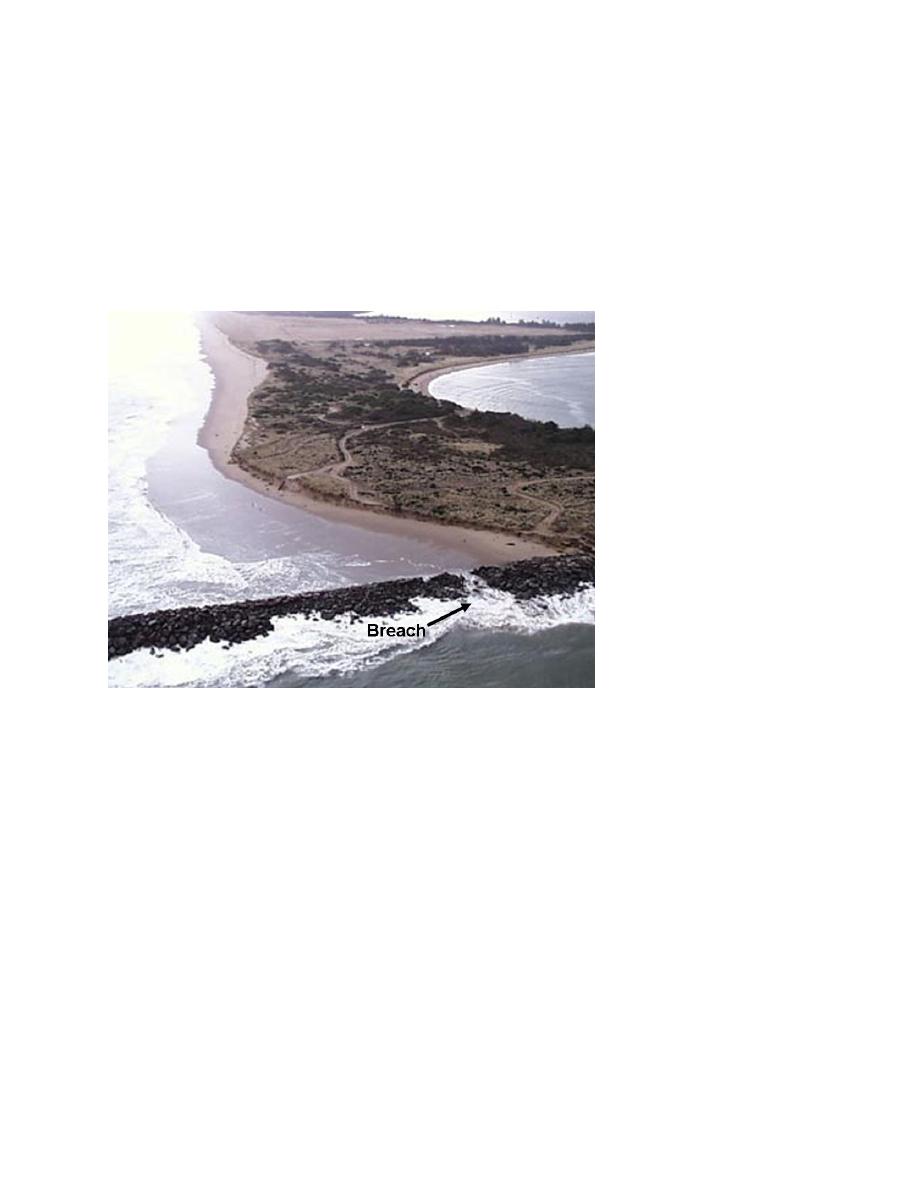
jetty. The breach in the jetty was approximately 4 m wide. A complete discussion of the jetty
breach and closure operation is given by Hays et al. (2003).
Following the breach, the beach adjacent to the north jetty eroded, losing an estimated 40,000 cu
yd of sand through the breach and into the entrance. The beach profile elevation was lowered
approximately 6.5 ft. Tidal flow through the breach widened the damaged area in the weeks
following the storm. Approximately 40 days after the jetty breached, the opening had widened
from an initial 13-ft width to about 245 ft. The jetty breach caused rapid shoreline recession and,
if not closed, could have resulted in a breach of the barrier spit.
Figure 8. Coos Bay, Oregon breach of the north jetty (Hays et al. 2003).
Because of the continued damage to the jetty and the transport of sediment through the jetty and
into the navigation channel, the U.S. Army Engineer District, Portland, initiated the coordination
of an emergency repair on 25 November 2002. Construction began on 20 December 2002, and
the repair was completed on 9 January 2003. The jetty was restored to the 1939 design cross-
section with slightly larger stone to improve structure stability. A jetty "bench" was also
constructed along the structure to protect the foundation from return flow scour. The bench is a
rubble mound constructed perpendicular to the jetty on the beach side to an elevation of +9.8 ft
mllw and 20 ft wide. The jetty repair also included a 50,000 cu yd sand fill in the eroded area
adjacent to the jetty breach. The fill replaced the sand lost through the breach and advanced the
shoreline seaward of the repair area. The fill buried the bench and provides protection to the
jetty root. The jetty has not sustained damage since the repair.
Hatteras Island, North Carolina. Hurricane Isabel struck the North Carolina Outer Banks on
18 September 2003. The storm breached Hatteras Island about 6 miles northeast of Hatteras
Inlet and quickly widened to an overall width of over 1,500 ft. With support from the U.S. Army
Corps of Engineers' Coastal Inlets Research Program, the short-term hydrodynamic and
14


 Previous Page
Previous Page
